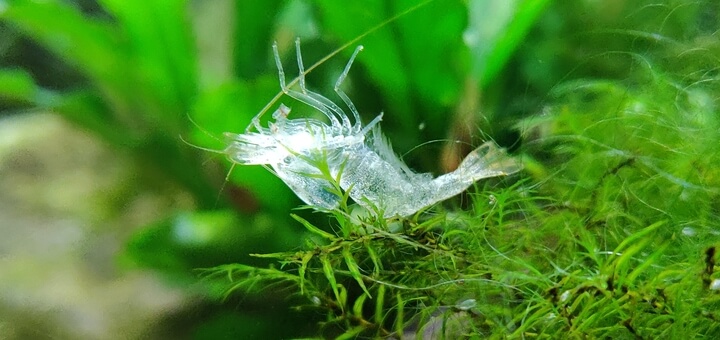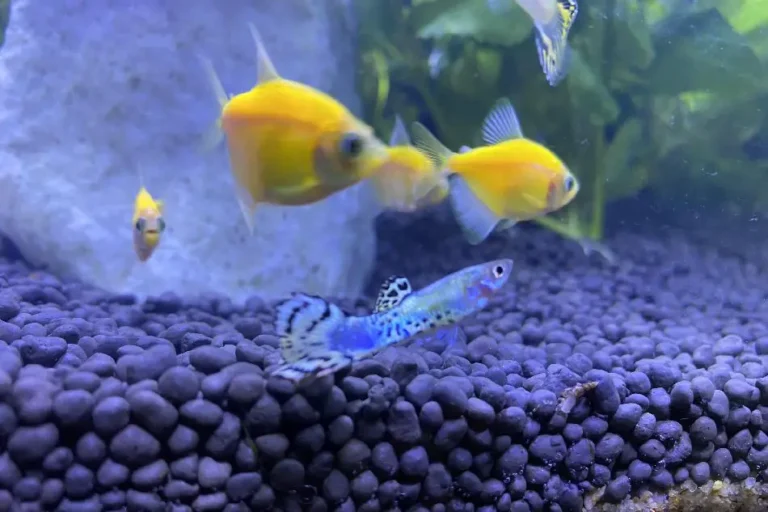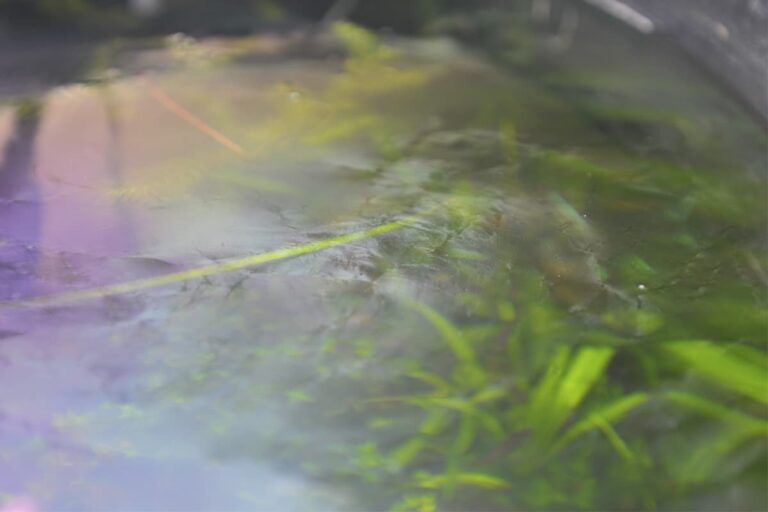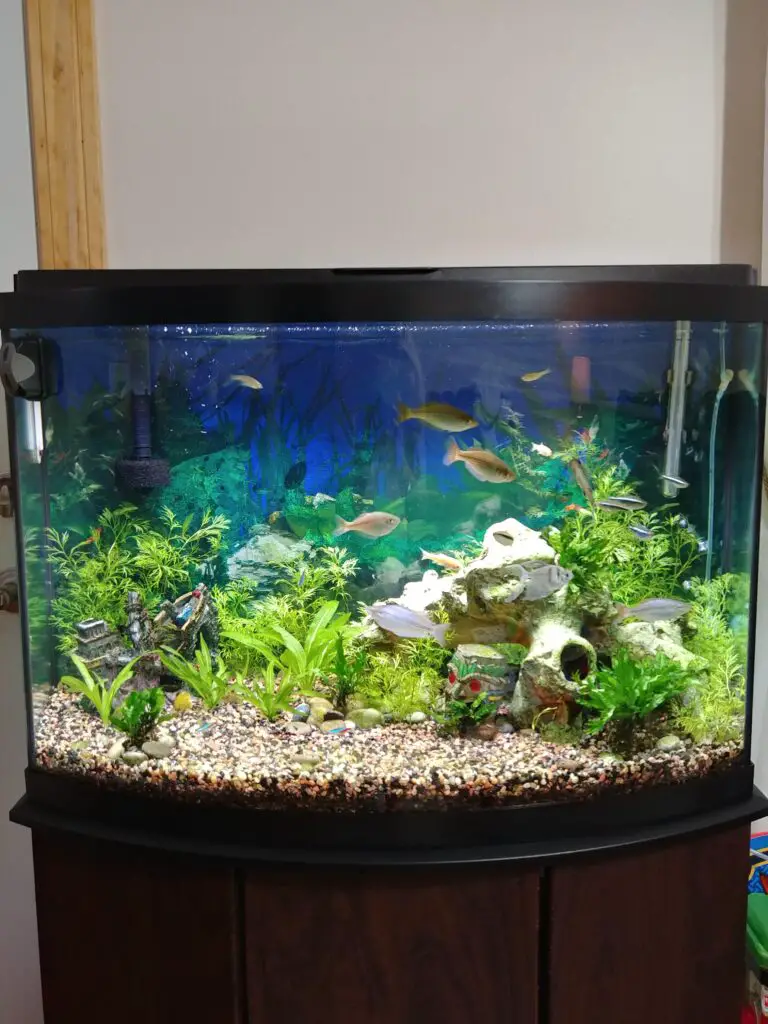Is My Shrimp Dead Or Molting?
Motionless and unresponsive shrimp are typically dead. They become stiff and rigid over time, differing from recently deceased shrimp, which may have a grayish and soft exterior.
Dead shrimp may have lost legs or claws due to predators in their environment. These physical indicators can help determine if your shrimp is alive, molting, or deceased.
Molting is a process where a shrimp sheds its old exoskeleton and grows a new one. This transformation may resemble death, but there are distinct differences.
A shrimp with a shell that appears lifeless is likely molting. This can be confirmed by inspecting the shrimp’s eyes. If they are white and cloudy instead of black and shiny, molting is occurring.
Do Shrimp Play Dead?
Shrimp exhibit a behavior known as thanatosis when sensing danger or threatened by a predator. The shrimp quickly flips onto its back and remains motionless to avoid detection.
Predators are less likely to attack something that appears to be already dead, increasing the shrimp’s chance of survival.
Shrimp Molting
Molting allows shrimp to grow, shed parasites, and renew their exoskeletons. The process, lasting from a few minutes to several hours, involves shrimps completely shedding their external skeletons and secreting new ones.
This process occurs frequently throughout a shrimp’s lifetime, with some species molting as often as once per week.
As molting is an energy-intensive activity, it usually occurs at night to avoid disturbance from predators or other environmental factors.
Is Shrimp Molting a Good Sign?
Molting is a natural process for healthy shrimp and an important sign of their thriving. During molting, shrimp shed their old exoskeleton and absorb more calcium from the water to build a new one.
This process helps them grow bigger and stronger. Seeing your shrimp molt is generally considered a positive sign.
Is My Ghost Shrimp Dead Or Molting?
Molting in ghost shrimp typically occurs between 6 and 12 weeks old, triggered by an increase in water temperature.
During molting, the shrimp turns white, becomes immobile for several days, and sloughs off its exoskeleton.
The animal will usually recover once it has shed its exoskeleton. If you suspect your ghost shrimp is dead rather than molting, check for signs of injury or illness such as discoloration or a missing appendage.
Amano Shrimp Molting
Amano shrimp, or Caridina multidentata, molt like many other crustaceans. They shed their hard exoskeleton and grow a new one underneath.
This process can take several hours and the shrimp will be vulnerable during this time as they lack protection until the new shell forms.
Molting is an essential part of growth for Amano Shrimp and should not be interrupted if possible.
Shrimp Molting in New Tank
Shrimp molting in a new tank can be an exciting experience for aquarium owners! As shrimp molt, they shed their exoskeleton and create a brand-new one.
This process helps them grow, as well as replenish nutrients that were lost from the old shell.
It is important to note that during this process, the shrimp will be very vulnerable, so it is best to provide plenty of hiding places for them until their new shell has hardened up.
Keeping water parameters stable and providing ample food sources are essential components of successful shrimp molting in a new tank.
Dead Cherry Shrimp
Dead Cherry Shrimp are a type of freshwater shrimp native to Japan and Korea. They are popular among aquarium hobbyists due to their vibrant red coloration and relatively low maintenance requirements.
These colorful invertebrates prefer water with a neutral pH, temperatures between 68-78 degrees Fahrenheit (20-26 Celsius), and small amounts of salt in the water for optimal health benefits.
Dead Cherry Shrimp also require an abundance of oxygen, so frequent water changes are recommended in order to keep these little critters happy and healthy!
Ghost Shrimp Molting
Ghost Shrimp, Glass Shrimp, or Crystal Red Shrimp are translucent crustaceans in freshwater aquariums. They undergo a unique molting process, shedding their old exoskeleton and replacing it with a new one for growth.
Molting can be stressful for the shrimp and should be monitored closely. Done correctly, Ghost Shrimps gain strength and vitality from the process.

Credit: www.shrimpscience.com
How Do You Tell If Shrimp is Molting Or Dying?
Differences between healthy shrimp and those suffering from ill health or death can be recognized. Examine the shrimp’s shell to determine if it is molting or dying.
Molting involves a shrimp shedding its exoskeleton to grow and accommodate a larger body size.
This process takes several days, with the old shell peeling away from the head before falling off completely.
A new, larger shell forms beneath the old one and hardens over time. Dying shrimp tend to have discolored shells, sunken eyes, and dark spots, signs of organs shutting down due to illness or age-related issues.
Dead shrimp bodies, known as “shrimplets,” may still contain some shell coloration. These specimens should be inspected closely for disease or poor health indicators before consumption.
Is My Shrimp Dead Or Sleeping?
Determining if a pet shrimp is dead or sleeping involves checking for signs of life. Look for movement; a non-moving shrimp might not be alive.
Observe the shell color—if it’s grayish-white instead of vibrant, this could indicate death.
Lightly touch the shrimp with tweezers; lack of recoil could mean it’s no longer alive (don’t pick up the shrimp unless wearing gloves).
If these tests don’t produce results, the shrimp may have passed away.
How Do Shrimp Act When Molting?
Shrimp stop eating and seek a sheltered spot or burrow to hide in for protection from predators when molting.
They shed their exoskeleton and develop a new, larger one underneath. The shell becomes extremely soft during molting, making them vulnerable to predators.
After molting, the shrimp’s body swells as it absorbs water into its new exoskeleton until it hardens and takes shape.
This process can take from several hours to several days, depending on the shrimp species and environmental factors like temperature and salinity levels.
Once hardened, the newly molted shrimp is fragile but more agile due to its increased size, allowing greater underwater mobility to escape potential danger.
How Long Does It Take a Shrimp to Molt?
Molting, shedding the old exoskeleton to grow and develop, is a regular part of a shrimp’s life cycle.
The molting time varies depending on species and growth stage, but most species take 2-3 days to shed their old exoskeleton.
They are vulnerable during this period as their new shell softens until it fully hardens within 24 hours after molting.
Shrimps need access to calcium-rich foods like algae and aquatic plants during this phase for their new shells to be strong enough to protect against predators.
Shrimp Shed or Dead? How to Tell the Difference in Neocaridina Cherry Shrimp, & Caridina Colonies
Conclusion
Shrimp molting can be a confusing process, especially for inexperienced shrimp owners.
As long as the owner is aware of what to look out for, it should be easy to tell if their shrimp is dead or just going through its natural molting cycle.
Knowing the difference between these two scenarios can help ensure that your aquarium stays healthy and thriving!





